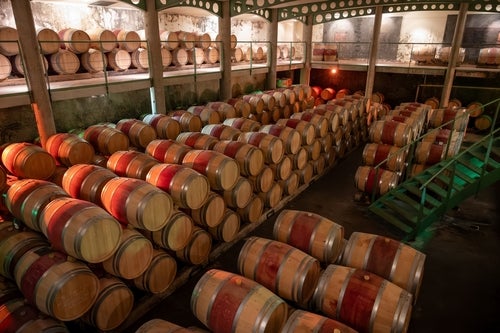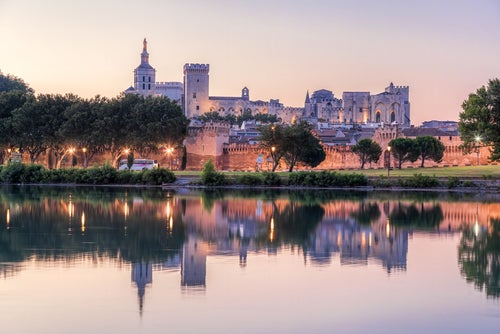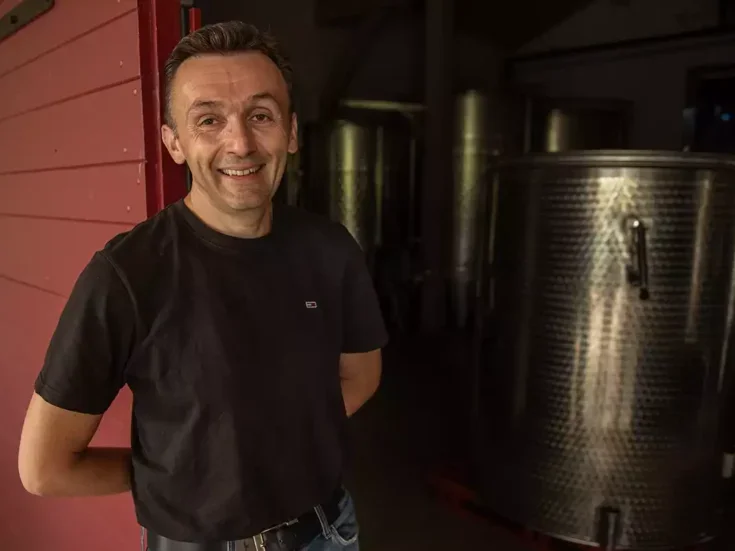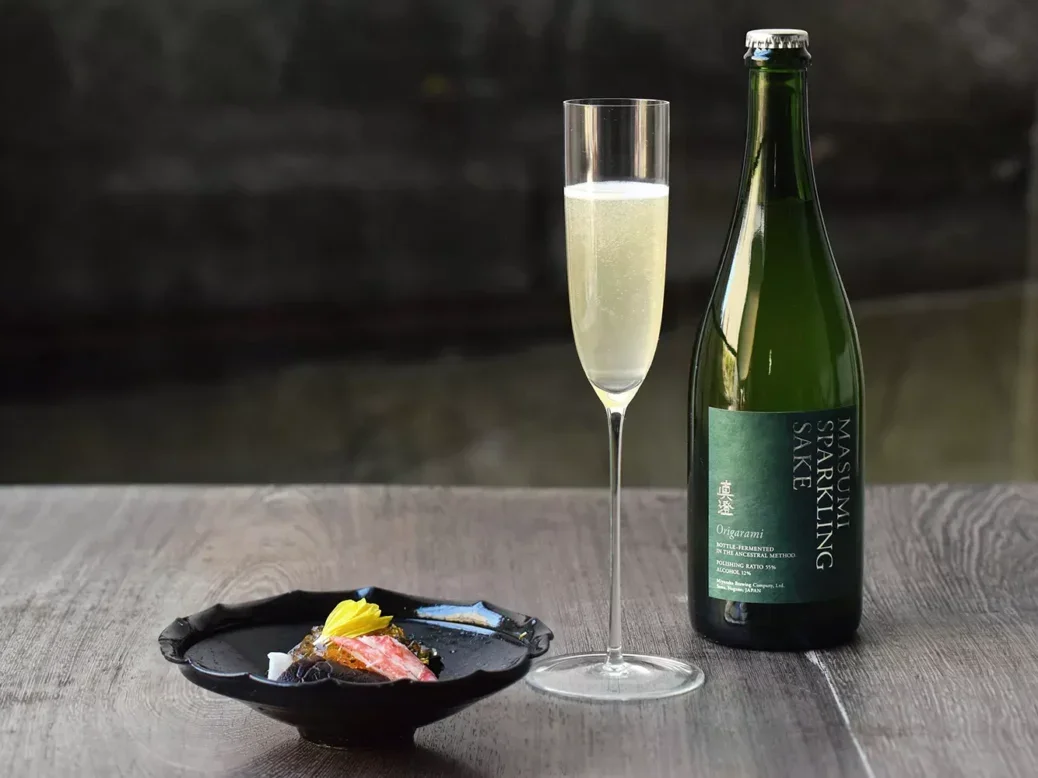
Jim Clarke on the rise of awa sake—or awazake—the exciting new breed of sparkling sake that is inspired by bottle-fermented sparkling wine.
Given that fermenting a beverage inherently produces carbon dioxide bubbles, it seems inevitable that every fermented beverage might exist in a sparking form of some sort or another. In beer bubbles are pretty much expected, and thanks to Champagne and Prosecco in particular, wine is hardly lacking for examples. Now sparkling sakes are taking the stage as well.
Bubbly sakes have actually been around since at least the early 1990s, but these early examples, like most beer, were force-carbonated after fermentation had finished. The resulting bubbles are simple, and soda-like, and the sakes go flat quickly. More recently, sakes made in a manner inspired by traditional method sparkling wines have emerged, and as with wine, the process brings an elegance and depth that a tank of CO2 cannot.
Atsushi Nakano, master brewer for Nagano-based Masumi, became intrigued with the traditional method process while studying fermentation at Tokyo Agricultural University. He began experimenting at Masumi as early as 2001, but it was only ten years later that they released their first sake made with fermentation in bottle. It’s not strictly “methode champenoise,” but that’s because the winemaking technique is not directly mappable onto the brewing process; there are several challenges and adaptations necessary.
Regulating sparkling sake
One of the biggest challenges is regulatory; Japanese rules on sake brewing forbid the addition of sugars or yeast into the bottle. So getting yeast and fermentable sugars into the bottle is a process more “ancestrale” than “champenoise.”
“So you’ve got a tank that has what the brewer has determined to be the right amount of glucose,” says Keith Norum, international sales advisor at Masumi, “and at that point they pasteurize, to stop the enzymes from creating more glucose. If you didn’t do that you’d have havoc in the bottle” because sake brewing, uniquely, consists of parallel fermentations: starch is being converted to sugar at the same time yeast is converting sugar into alcohol. After the sake is pasteurized and filtered yeast is reintroduced while still in the tank and then it can be bottled. Other breweries such as Hakkaisan in Niigata use two separate batches; one is allowed to completely ferment and then the other, still-fermenting is added in the correct proportions before bottling.
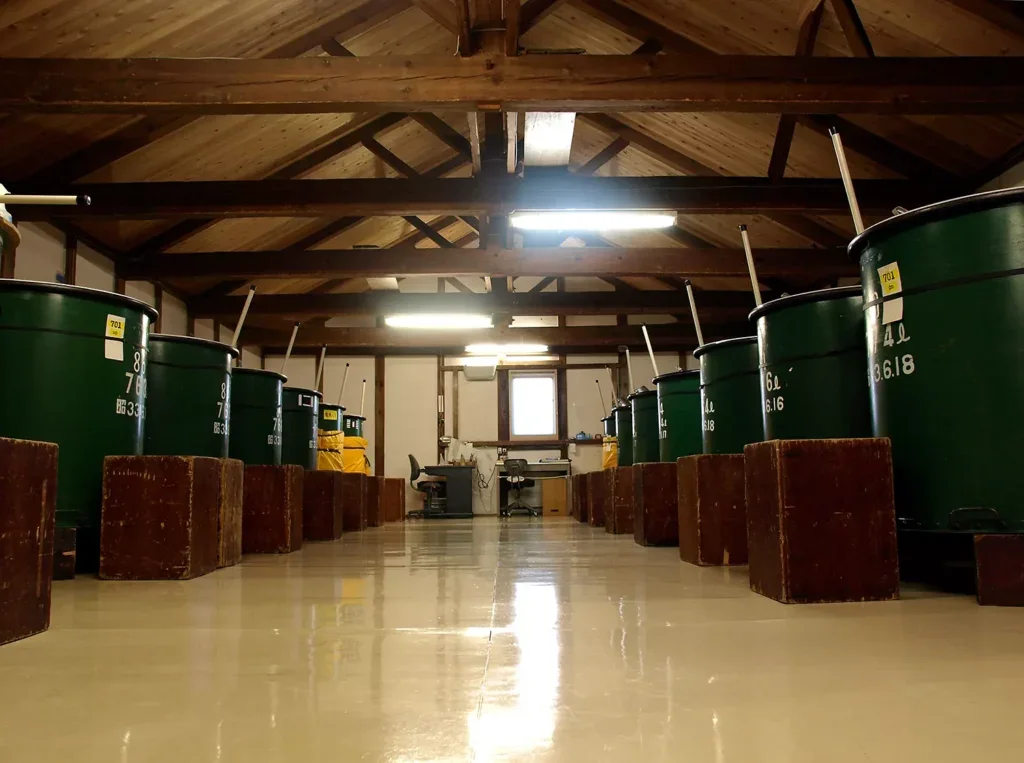
Disgorgement follows procedures familiar to Champagne fans, albeit without any sugary dosage. Setting a level of sweetness can be achieved by pasteurizing in bottle to stop fermentation, or choosing yeast strains that will stop fermenting and leave an appropriate level of sugar. Not that much sweetness is needed in terms of balancing acidity. “With about one-third the acidity of a sparkling wine,” says Tim Sullivan, international brand ambassador for Hakkaisan, “our sparkling sake is soft and gentle, but not too sweet, finishing dry and clean.” Acid rarely figures prominently in sake; a still sake would have one-third again less acid than bottle-fermented sparkling sake.
This manner of sparkling sake began to coalesce as a category in 2016 when several of the breweries making them came together to codify the process and create a seal that would help distinguish the sakes. The category is now known as awa sake (“foam” sake), or sometimes awazake, and the association has grown from its initial nine members to 28.
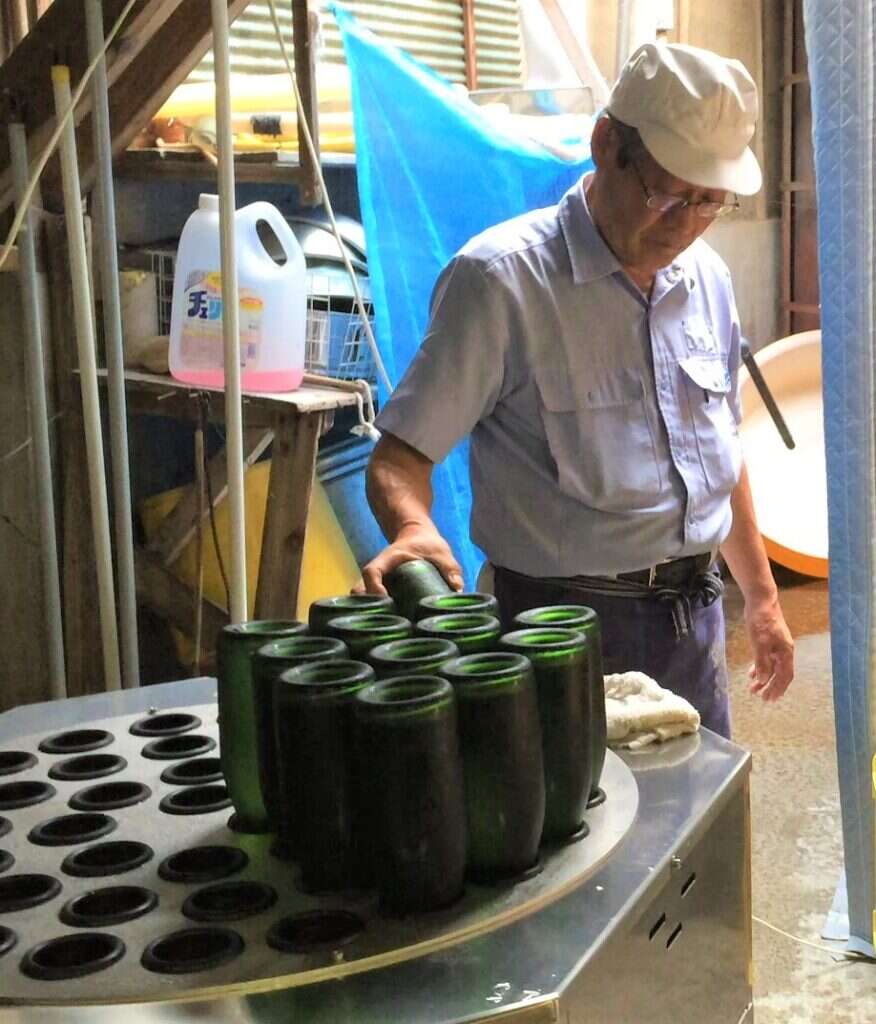
Founding member Hakkaisan brewery became interested in the category in 2013, with an eye toward the upcoming 2020 Tokyo Olympics. “Hakkaisan was inspired to create a super-premium sparkling sake that could stand up to any fine sparkling wine in quality and enjoyment and be used to celebrate the Olympics in style,“ Sullivan says. While the term “rice wine” is inaccurate, the interest in adapting methode traditionelle also fits in well alongside other wine-related concepts that have found their way into the world of sake lately; sake appellations (“Geographical Indicators”) have become increasingly common, and a number of brewers are working to explore and accentuate terroir-based factors in their sakes.
Sculpting texture and flavour
Awa sake’s rules specify several parameters: Minimum pressure is 3.5 bars, minimum alcohol is 10%, bottle fermentation is required, and they must be made with only Japanese rice. However, they don’t stipulate the amount of time to be spent on the lees before disgorgement. Most brewers seem to think this is less vital in sculpting the texture and flavor characteristics in sake than it is in wine; sakes contain more proteins than wines, and these may stand in for the mannoproteins developed during lees aging that create a smooth mousse.
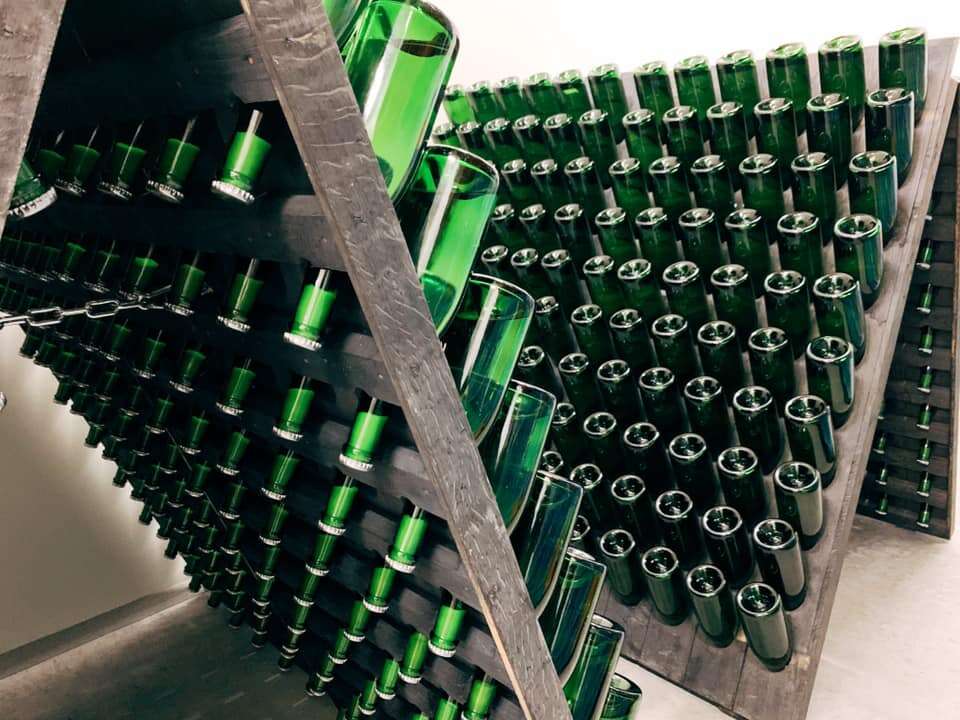
“Our sparkling labels are fresh and fruity,” says Naoki Kamota, marketing director at Dewazakura brewery in Yamagata, “so the time spent with the lees aging in the bottle is not an important factor. Conversely, since more time spent with the lees aging in the bottle gives a pleasant complexity, Dewazakura is researching a new product with long time spent with the lees.”
There are currently 32 official awa sakes registered with the association, with more being made by non-members as well. Response has been very positive, so expect to see more on the way. At Masumi, Norum says that even though it represents a small part of their production importers are asking for it specifically. “It’s going up in demand. Bubbly sake is a booming thing right now.”
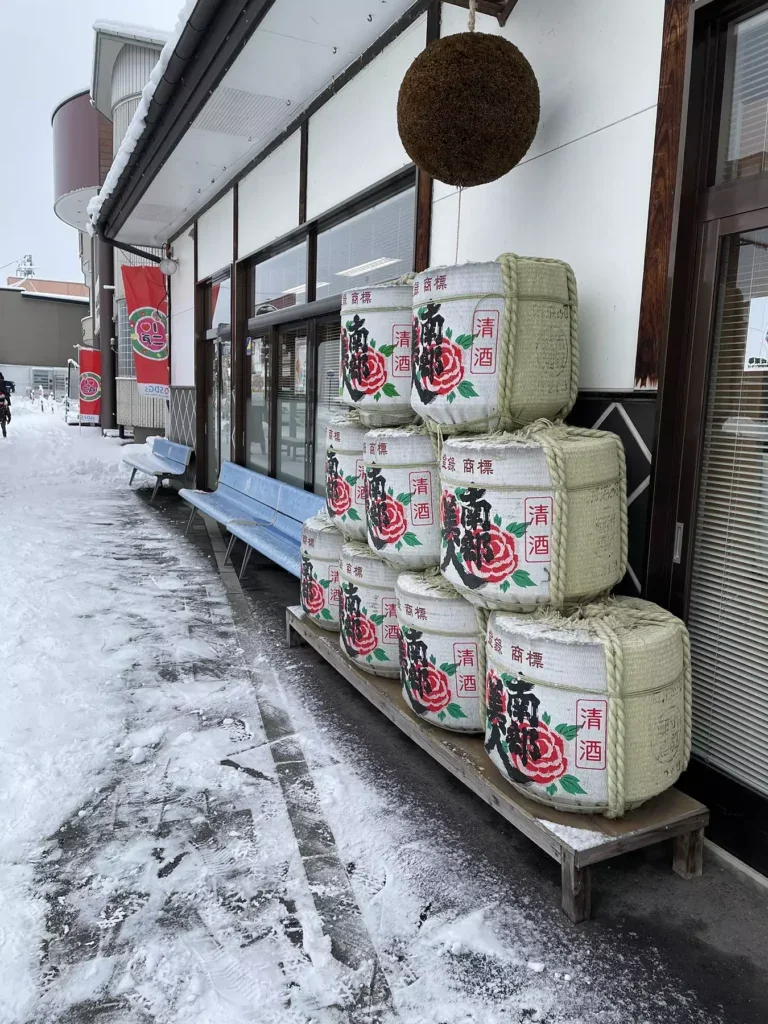
Awa sake: Some recommended sparkling sakes
Dewatsuru Ashitae Sparkling, Akita
Dewazakura Awa Sake, Yamagata
Hakkaisan Clear Sparkling Awa, Niigata
Kikuizumi Hitosuji, Saitama
Kikuizumi Hitosuji Rosé, Saitama (the rosé color comes from the use of pink yeast in fermentation)
Masumi Sparkling, Nagano (For an interesting comparison, try together with the Masumi Sparkling Origarami, a sparkling sake made in the same method, but left undisgorged and therefore slightly cloudy)
Nanbu Bijin Awa Sparkling, Iwate

